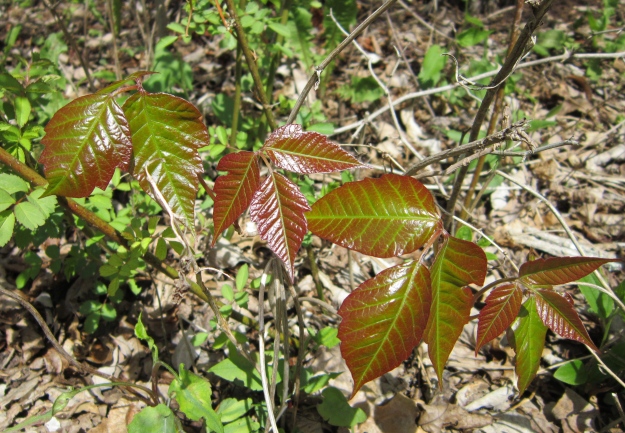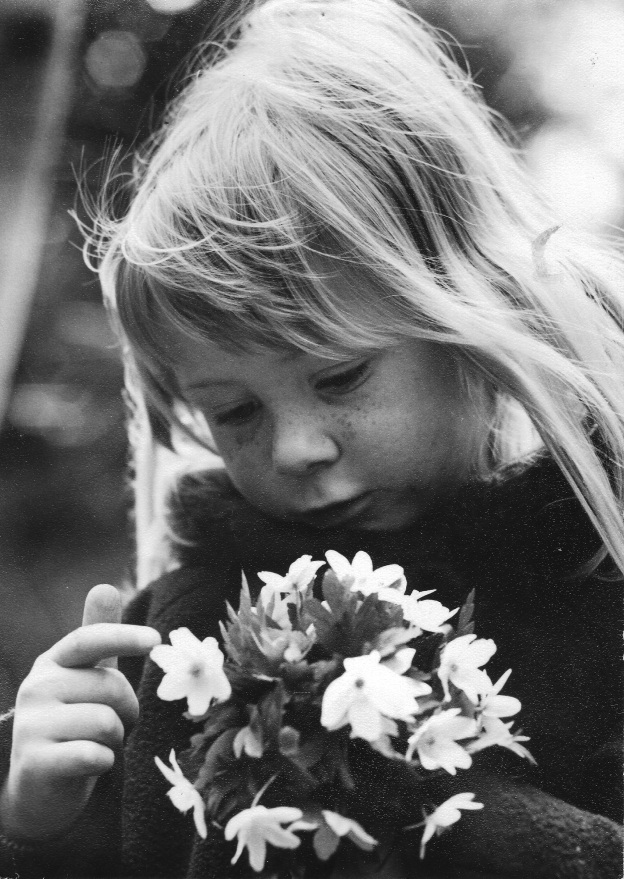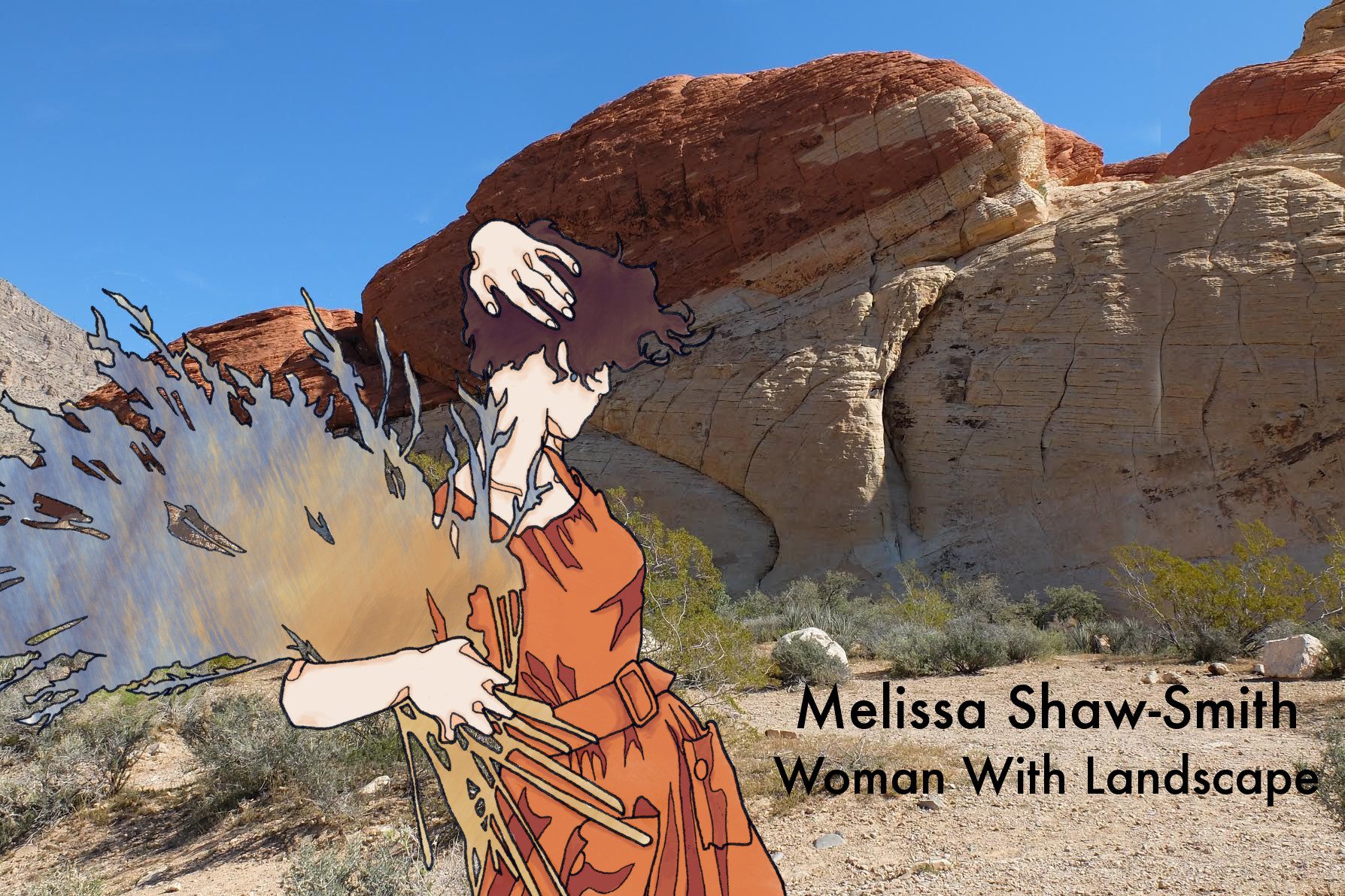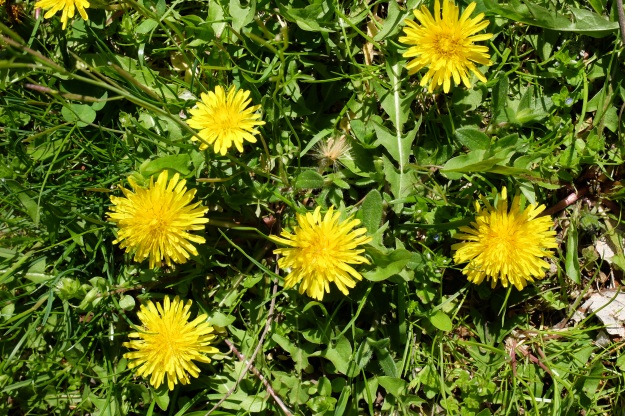 Put me by
Put me by
Moving water
When I’m old.
A lake, a sea, a stream—
any wet thing.
So long as I can watch
Light-play on the surface,
The membrane dappled by wind,
Hear the glug and gurgle of water pockets
slapping the hulls of moored boats,
And smell the tang of moisture in the air,
I will be happy.
Monthly Archives: May 2014
POISON IVY JUNGLE
 Not many things give me nightmares, but poison ivy—Toxicodendron radicans—is one of them.
Not many things give me nightmares, but poison ivy—Toxicodendron radicans—is one of them.
I didn’t even know what the blighter looked like when I started gardening in New York’s Hudson Valley. Vague ideas of Christmas card’s wreathed in leafy loveliness came to mind, and I imagined some minor skin irritation akin to the hives from a stinging nettle. Boy was I in for a shock.
One night I was awoken by an intense itching on the insides of my arms: I’d met my nemesis. But this noxious weed wasn’t going to get the better of me! I put on my armor—heavy-duty gardening gloves, long-sleeved sweatshirt, jeans, and boots—and waded into battle. I even went so far as to ditch my old clothes once I’d beaten my enemy into submission.
It didn’t help. The urushiol—the toxic sap of the plant—worked its way under my defenses. I looked like a burn victim, with oozing bandages swaddling my arms and shins. And don’t talk to me about the excruciating itch that made me tear at my skin like a mad woman.
 I tried every remedy in the almanac—oatmeal baths, jewel weed, calamine lotion, cortisone, baking soda, bleach. Yes, you heard that last one right—neat bleach! They all worked to a degree. But the bottom line is that once the angry rash and blisters appear, you have to resign yourself to three weeks of hell.
I tried every remedy in the almanac—oatmeal baths, jewel weed, calamine lotion, cortisone, baking soda, bleach. Yes, you heard that last one right—neat bleach! They all worked to a degree. But the bottom line is that once the angry rash and blisters appear, you have to resign yourself to three weeks of hell.
So it’s no wonder that walking past a lush patch of poison ivy on the roadside is enough to give me sleepless nights. And when a seedling dares to rear its not-so ugly head in my garden, it makes me break out in a cold sweat and reach for the Round-up.
Recently I learned an even more disheartening fact: A study by researchers at the University of Georgia found that poison ivy is particularly sensitive to CO2 levels, greatly benefiting from higher CO2 in the atmosphere. Poison ivy’s growth and potency has already doubled since the 1960s, and it could double again once CO2 levels reach 560 ppm David Templeton (July 22, 2013). “Climate change is making poison ivy grow bigger and badder”. Pittsburgh Post-Gazette.
So, unless you fancy a post-apocalyptic world over-run with vast jungles of poison ivy, curb your CO2 emissions! 
CHILDHOOD WALK
 Early sunlight seeping around the curtains.
Early sunlight seeping around the curtains.
Blackbird singing. Day beckoning.
Slip out of sleeping house.
Shimmering jewels of dew on the grass.
Wet ankles.
Air fragrant with spring.
Pass the Hawthorn tree dropping damp blossoms on the lawn.
Discover pale yellow primroses on the bank by the river.
Inhale sweet, honey scent.
Inspect the hollow in the willow—cushions of moss for fairies to dance on.
Watch small brown trout in the shallows.
Climb up through the woods.
Soft pine needles underfoot.
Breeze sowing in the tops of the trees.
Tip-toe into the wild garden.
Peonies buried in a tangle of long grass.
Irises blooming through clumps of stinging nettles.
Startle a heron at the overgrown pond.
Poke amongst the duckweed for fat, black tadpoles.
Jump and jump to snatch a branch off the cherry tree,
Laden with heavy pink flowers.
Add it to the posy of violets and primroses.
Home in time for breakfast.
DANDELION
 A little girl handed me a limp, browning dandelion the other day. “You need to put it in water,” she said, smiling hopefully. I knew the sentiment all too well. How often had I fallen victim to the lure of a lawn strewn with fuzzy golden flowers and picked handfuls to stuff in jam-jars, only to discover how short-lived their splendor was once picked.
A little girl handed me a limp, browning dandelion the other day. “You need to put it in water,” she said, smiling hopefully. I knew the sentiment all too well. How often had I fallen victim to the lure of a lawn strewn with fuzzy golden flowers and picked handfuls to stuff in jam-jars, only to discover how short-lived their splendor was once picked.
For the past week, on sunny days, I’ve taken a bowl out to the garden and plucked the heads off the freshly opened dandelions. No, it’s not some manic, pesticide free attempt to remove them from my lawn. I’m storing them in bags in my freezer until I’ve accumulated enough to give to a friend to make dandelion wine. I can’t wait to taste the results.
The name, from the French dent-de-leon, or lion’s tooth, refers to the jagged shape of the dandelion leaves. When I was a kid, I spent hours picking these greens to feed my pet rabbit and tortoise. I learned early on that the white sap that oozes out of the stem is not only sticky, but permanently stains clothing brown! But I still can’t pass a lush bunch without having the urge to pick them. Packed with vitamins and minerals, these leaves make a delicious dish. I first tasted horta—spring dandelion leaves cooked with tons of garlic and lemon juice and olive oil—when living in Greece as a child.
The dandelion has been used medicinally for centuries, and all parts of it are edible. One of its many names is pee-the-bed, for the diuretic effects of ingesting the dried root. It’s far from being merely a humble weed, and yet, this is the plant that herbicide makers love to target in their advertising. Of the numerous names for the dandelion, found in most languages, my favorite is from the Persian, qasedak, meaning small postman because it brings good news.
The First Dandelion.
Simple and fresh and fair from winter’s close
emerging,
As if no artifice of fashion, business, politics,
had ever been,
Forth from its sunny nook of shelter’d grass—
innocent, golden, calm as the dawn,
The spring’s first dandelion shows its trustful
face.
–WALT WHITMAN.
A GREEN FOOL
 When you think of 20th century Irish poets who embody the notion of rural Ireland, Seamus Heaney is probably the first name that comes to mind. Granted, he was a marvelous poet who deserves his acclaim, yet there are others.
When you think of 20th century Irish poets who embody the notion of rural Ireland, Seamus Heaney is probably the first name that comes to mind. Granted, he was a marvelous poet who deserves his acclaim, yet there are others.
 Patrick Kavanagh was one such poet. The fourth of ten children, he was raised on a small farm in Co. Monaghan. He left school at 13 to apprentice to his father, a shoemaker, and to work on the farm.
Patrick Kavanagh was one such poet. The fourth of ten children, he was raised on a small farm in Co. Monaghan. He left school at 13 to apprentice to his father, a shoemaker, and to work on the farm.
To say he was a conflicted poet is to put it lightly. His poetry was born out of the stony grey soil of Monaghan. He managed to capture the rural life in its bare-bones beauty, while at the same time railing against it. He escaped to Dublin when he was twenty-eight, and for a self-proclaimed peasant, he went a long way to expand his horizons. I suspect he was not always a pleasant fella to be around—hard drinking, belligerent, with a huge chip on his shoulder. But it is the poetry that counts.
At the age of fifty, he had a lung removed to stave off cancer. Convalescing, he would sit on the banks of the Grand Canal that runs through Dublin. And it is here that he seems to have finally come to some kind of peace with the rural landscape that he was so deeply rooted in.
CANAL BANK WALK
Leafy-with-love banks and the green waters of the canal
Pouring redemption for me, that I do
The will of God, wallow in the habitual, the banal,
Grow with nature again as before I grew.
The bright stick trapped, the breeze adding a third
Party to the couple kissing on an old seat,
And a bird gathering materials for the nest for the Word
Eloquently new and abandoned to its delirious beat.
O unworn world enrapture me, encapture me in a web
Of fabulous grass and eternal voices by a beech,
Feed the gaping need of my senses, give me ad lib
To pray unselfconsciously with overflowing speech
For this soul needs to be honoured with a new dress woven
From green and blue things and arguments that cannot be proven.


